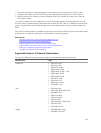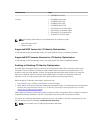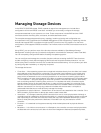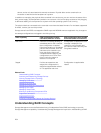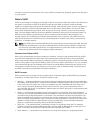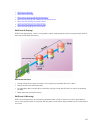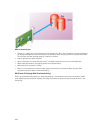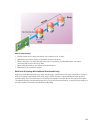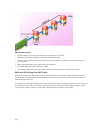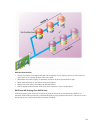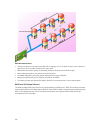
concepts, as well as some familiarity with how the RAID controllers and operating system view disk space
on your system.
What Is RAID?
RAID is a technology for managing the storage of data on the physical disks that reside or are attached to
the system. A key aspect of RAID is the ability to span physical disks so that the combined storage
capacity of multiple physical disks can be treated as a single, extended disk space. Another key aspect of
RAID is the ability to maintain redundant data which can be used to restore data in the event of a disk
failure. RAID uses different techniques, such as striping, mirroring, and parity, to store and reconstruct
data. There are different RAID levels that use different methods for storing and reconstructing data. The
RAID levels have different characteristics in terms of read/write performance, data protection, and
storage capacity. Not all RAID levels maintain redundant data, which means for some RAID levels lost
data cannot be restored. The RAID level you choose depends on whether your priority is performance,
protection, or storage capacity.
NOTE: The RAID Advisory Board (RAB) defines the specifications used to implement RAID. Although
RAB defines the RAID levels, commercial implementation of RAID levels by different vendors may
vary from the actual RAID specifications. An implementation of a particular vendor may affect the
read and write performance and the degree of data redundancy.
Hardware And Software RAID
RAID can be implemented with either hardware or software. A system using hardware RAID has a RAID
controller that implements the RAID levels and processes data reads and writes to the physical disks.
When using software RAID provided by the operating system, the operating system implements the RAID
levels. For this reason, using software RAID by itself can slow the system performance. You can, however,
use software RAID along with hardware RAID volumes to provide better performance and variety in the
configuration of RAID volumes. For example, you can mirror a pair of hardware RAID 5 volumes across
two RAID controllers to provide RAID controller redundancy.
RAID Concepts
RAID uses particular techniques for writing data to disks. These techniques enable RAID to provide data
redundancy or better performance. These techniques include:
• Mirroring — Duplicating data from one physical disk to another physical disk. Mirroring provides data
redundancy by maintaining two copies of the same data on different physical disks. If one of the disks
in the mirror fails, the system can continue to operate using the unaffected disk. Both sides of the
mirror contain the same data always. Either side of the mirror can act as the operational side. A
mirrored RAID disk group is comparable in performance to a RAID 5 disk group in read operations but
faster in write operations.
• Striping — Disk striping writes data across all physical disks in a virtual disk. Each stripe consists of
consecutive virtual disk data addresses that are mapped in fixed-size units to each physical disk in the
virtual disk using a sequential pattern. For example, if the virtual disk includes five physical disks, the
stripe writes data to physical disks one through five without repeating any of the physical disks. The
amount of space consumed by a stripe is the same on each physical disk. The portion of a stripe that
resides on a physical disk is a stripe element. Striping by itself does not provide data redundancy.
Striping in combination with parity does provide data redundancy.
• Stripe size — The total disk space consumed by a stripe not including a parity disk. For example,
consider a stripe that contains 64KB of disk space and has 16KB of data residing on each disk in the
stripe. In this case, the stripe size is 64KB and the stripe element size is 16KB.
• Stripe element — A stripe element is the portion of a stripe that resides on a single physical disk.
205



